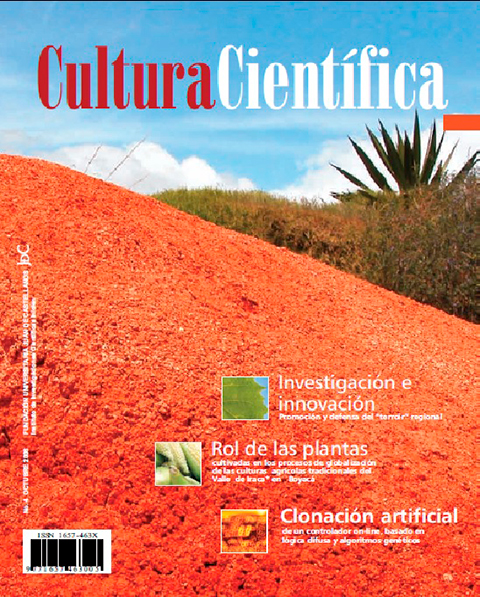Palabras clave:
Melanoma, Canino, Cavidad oralResumen
Al laboratorio de Patología de Medicina Veterinaria ingresó para necropsia el cadáver de un canino macho de 11 años de edad de raza Dachshund. En la evaluación se encontró una masa en la cavidad oral que presentó dos coloraciones que variaban de blanco a café. Para histopatología, se tomaron muestras de la masa en cavidad oral, ganglios linfáticos regionales, pulmón, corazón e hígado preservadas en formaldehído al 10%, luego de esta valoración se concluyó que la neoplasia en cavidad oral correspondía a un melanoma con características melánicas y amelánicas.
Descargas
Citas
malignancy. Vet Med; 95, 3: 204-223
BATEMAN, SC; CATTON, PA; PENNOCK, PW and KRUTH, SA. (1994). 0-7-21 Radiation therapy for treatment of canine oral melanoma. J Vet Intern Med; 8: 267-272.
BOLON, B; CALDERWOOD-MAYS MB and HALL, BJ. (1990). Characteristc of canine melanomas and comparison of histology and DNA ploidy to their biologic behavior. Vet Pathol; 27: 96-102.
DORN, CR and PRIESTER, WA. (1976). Epidemiologic analysis of oral and pharyngeal cancer in dogs, cats, horses and cattle. J Am Vet Med Assoc; 169: 1202- 1206.
GOLDSCHMID, MH; DUNSTAN, RW; STANNARD, A and TSCHARNER V. (1998) Histological classification of epithelial and melanocytic tumors of the skin, Edit forces institute of pathology. -HAHN, KA; BRAVO, L; ADAMS, WH and FRAZIER, DL; . (1994). Naturally occurring tumors in dog as comparative models for cancer therapy research. In Vivo; 8: 133- 143.
HARVEY, HJ. (1981). Prognostic criteria for dogs with oral melanoma. JAVMA; 6: 580-582.
KITCHELL, BE. (1994). Intralesional implants for treatmet of primary oral malignant melanoma in dog. JAVMA 1994; 2: 229-236.
KOENIG, A; BIANCO, SR; FOSMIRE, S; WOJCIESZYNJ and MODIANO, JF. (2002). Expression and significance of p53, Rb, p21/waf-1, p16/Ink-4a, and PTEN tumors suppressors in canine melanoma. Vet Pathol; 39: 458-472.
LAPRIE, C; ABADIE, J; AMARDEIL, MF et al. (2001) mib-1 immunoreactivity correlates with biologic behaviour in canine cutaneous melanoma. Vet Dermatol; 12: 139
LEVINE, RA and FLEISCHLI, MA. (2000) Inactivation of p53 and retinoblastoma
family pathways in canine osteosarcoma cell lines. Vet Pathol; 37: 54-61.
MACEWEN, EG. (1999). Canine oral melanoma: comparison of surgery versus surgery plus. Cancer Invest; 12: 4249-4258.
MACVEAN, DW. (1978). Frequency of canine and feline tumors in a defined population. Vet Pathol; 6: 715-718.
MAGALHÃES, AM; RAMADINHA, RR; BARROS, CS; PEIXOTO, P;. (2001) Estudo comparativo entre citopatologia e histopatologia no diagnóstico de neoplasias caninas. Pesq. Vet. Bras. 21(1):23-32.
MARINO, DJ; MATTHIESEN, DT; STEFANACCI, JD and MOROFF, SD. (1995). Evaluation of dogs with digit masses: 117 cases (1981-1991). J Am Vet Med Assoc; 207: 726-728.
MEUTEN, DJ. (2002). Tumors in domestic animals, Iowa state press, fourth edition.
MODIANO, JF; MICHELLE, GR and WOJCIESZYNJ. (1999). The molecular basis of canine melanoma: pathogenesis and trends in diagnosis and therapy. J Vet Intern Med; 13: 163-174.
MOULTON JE. (1990). Tumors in domestic animals, 3rd edition, Berkeley, CA; University of California press: 75.87.
PATTERSON, H; LATIMER, K. (2001). The variable cytologic appearance of canine melanoma Class (Patterson), and Department of Pathology (Latimer), College of Veterinary Medicine, The University of Georgia Athens, GA 30602- 7388
RAMOS-VARA, JA; BEISSENHERZ, ME; MILLER, MA and JOHNSON, GC. (2000).Retrospective study of 338 canine oral melanomas with clinical, histological and inmunohistochemical review of 129 cases. Vet Pathol; 37: 597-608.
SHOLA, S; SULAIMON; BARBERA, E. and KITCHELL, B. (2001).Canine melanoma; combating a destructive and deadly tumor. Vet Med: 931-942.
SMITH, SH; GOLDSCHMIDT, MH. and MACMANUS, PM. (2002). A comparative review of melanocytic neoplasm. Vet Pathol; 39: 651-678.
SULAIMON, S; EHRHART, E. and KITCHELL, B. (1999). Inmunihistochemical detection of canine melanomas with HMB-45. Vet Pathol; 36: 496-501.
THEON, AP; RODRIGUEZ, C. and MADEWELL, BR. (1997). Analysis of prognostic factors and patterns of failure in dogs with malignant oral tumors treated with megavoltage irradiation. J Am Vet Med Assoc; 210: 778-784.





